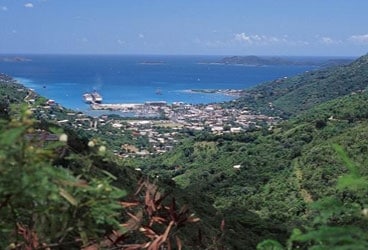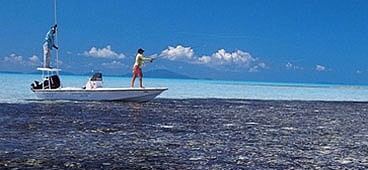
Ghosts of the BVI main page
For the entire six years that I worked on Caribbean Travel & Life magazine, the staff never ceased to duke it out when a story on the British Virgin Islands appeared in the lineup. The editor to get the trip was always the one listed at the top of the masthead. Needless to say, I never made it onto the plane. So when the opportunity to go to the BVI came up – soon after a December when FFSW editor Scott Leon was chasing sailfish in Guatemala and I was fishing the frigid, sleet-blasted Outer Banks for big stripers with Captains Sarah Gardner and Brian Horsley – I figured it was fair to nominate myself, even if Leon did happen to be out of the office.
The BVI have a long and storied past rife with tales of Indians, explorers, and pirates and privateers, who had permission and political backing to pillage the assets of an opposing European power. Its dozens of islands, islets and cays were playgrounds and hideouts for adventurers, and their unique history continues to define the character of the destination. Norman Island, named after a French pirate, inspired Robert Louis Stevenson to write Treasure Island; the catchy tune “Fifteen men on a dead man’s chest / Yo-ho-ho and a bottle of rum” is derived from Blackbeard’s stranding of – you guessed it – 15 men on tiny Dead Chest Island; and the archipelago’s main waterway, the Sir Francis Drake Channel, was named for one of England’s most famous privateers.
Today, it’s a world-renowned sailing and boating destination, and you’ll still see countless sailboats as well as megayachts and serious sportfishers rigged to troll the famous North Drop for trophy billfish and other pelagics. Although big-game tournaments in the area are usually headquartered on St. Thomas, the drop is actually located in British waters. Just under the radar of these high-stakes events lie the possibilities of offshore fly-fishing – which local captain Kirby Hodge is already exploring – and an inshore fishery that harbors a reliable population of the most sought-after flats species.
**Taking on Tortola
**The largest in the British Virgin chain, Tortola is a volcanic, mountainous island ringed by numerous coves. Navigating its narrow, twisting roads, which barely seem wide enough for two lanes of traffic, can be an exercise in patience, observation and island-style map interpretation. But having to drive on the British side of the street can make it downright intimidating. I had tackled my fair share of left-handed roads on several Caribbean islands, so I told Sarah Gardner that since she had the fortitude to travel with me as my mentor and fishing partner, I would captain the rental car.
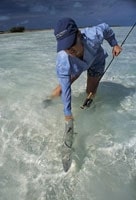
| While the BVI is home to tarpon and permit, among other inshore and offshore species, the bonefishery is the most consistent. Tipped off by a local guide about a small flat, we drove to the foot of the bridge to Tortola’s Beef Island airport. It’s easily sighted by its “toll booth,” an unattended 3-foot-tall upside-down wooden L that sticks out from the side of the road. A hollowed-out coconut on the end of the booth receives the $1 crossing fee from honest residents and visitors. |
“Right there! Left!” Gardner said excitedly. It took a few seconds for my brain to coordinate the directions with my extremities before I pulled onto a dirt and gravel “road.” Following it around a couple of tight curves, we came to a medium-sized shallow pool. We immediately spotted tails from the car, then scrambled to get our gear out of the trunk and assemble it quietly. Gardner crept into the water first, easing straight ahead to the two good-sized fish that were obliviously feeding. I moved to the left, slowly working to the other side in hopes that another pair would show up. Being careful not to spook the fish, Gardner stalked them with absolute patience. She made a couple of quick false casts, and I held my breath as the fly sped directly toward the bones and almost hit the target. The fish moved away but didn’t spook. She stood stark still until they were tailing once more, then cast again. It was perfect, and the fly line went straight to the target, landing within inches of them. Suddenly, a cry of “crap!” filled the silence of the lagoon as two wakes sped away from where she stood with her lowered fly rod in hand.
We ventured onto the half-mile-long flat on the opposite side of the bridge, where some locals were relaxing on the beach. There were big bonefish here, too, but they proved too difficult to chase with the rising tide. Forget whatever you’ve heard from anglers who’ve been to the Bahamas or Belize about the Caribbean’s stupid, fly-devouring bonefish that congregate in vast numbers. On Tortola, the flats are small, local treasures that house a limited number of keen and wary bones and are closely monitored by the few resident fly-fishermen. Ian Batchelor was the one who directed us to the bones near the bridge. He has lived on the island for more than 20 years, and owns and operates Caribbean Fly-Fishing with his wife, Liz. There’s no fly-fishing outfitter in the BVI, so you have to book your accommodations, inter-island flights and your guides all on your own. The Batchelors can help you out on Tortola by making hotel arrangements and giving you helpful insiders’ information.
The Batchelors’ base of operation is on Nanny Cay, and we went to check it out. While there are a few flats that you access from the road, many of the best spots are reachable only by boat. Caribbean Fly-Fishing has a unique setup that’s ideal for the BVI. Because so many people come here for family vacations, there’s often a lone angler who wants to squeeze in some fly-fishing. But how do you ditch your companions? You don’t have to. The Batchelors run a 28-foot Bertram that can tow one of their skiffs, and they specialize in custom trips. “Often there’s only one fisherman in the family, but we’ll take the whole group out,” Batchelor explains. While one guide takes your family snorkeling or on an island tour, or gives them fly-fishing lessons, another guide leads you to the local honey holes. He says that because Tortola’s flats are small, spread out and entirely dependent on the tides, you have to move often from one to the next. Bonefish, as well as tarpon, permit and even snook, reside here and typically hang around mangroves or feed in the shallows. While you won’t usually find monster-size fish, the bones are plenty big enough. “I saw more fish over 5 pounds in five minutes than I’ve ever seen in my life,” Gardner said.
That evening, she and I ate at Fat Hog Bob’s, which has tables on a wide porch that runs the length of the building and overlooks Hodge’s Creek. Over West Indian pumpkin soup and ribs, we talked about the fishing still to come. The tide had finished going out, and as we gazed across the nearly bare flat stretching out before us, something shiny caught our attention. We got up to investigate, only to see tailing bonefish right in front of us. It was almost like they were mocking us, a reminder of the unattainable bones from the morning.
**The Odd Island Out
**The next day we took a puddle jumper to tiny Anegada where Garfield Faulkner, one of its three guides and 200 year-round residents, met us when we landed. In stark contradiction to the rest of the BVI, which are volcanic and feature hills, peaks and lush vegetation, Anegada is a flat, desertlike coral atoll. It’s just 11 miles wide by 5 miles long, and its claims to fame include fresh-caught lobster and a 9-mile flat that’s fished almost exclusively by the local guides.
We went to the Anegada Reef Hotel where Faulkner’s guiding business, which also employs his brother Kevin, is based. Checking into the hotel is a laid-back process that ends when the desk attendant/bartender/waiter/activities coordinator gives you a room number. When I asked about a key, he just smiled at me with a “you’re-so-naïve-it’s-cute” expression typically reserved for small children and said, “No one uses keys here.” Of course, after finding the self-serve bar where you keep your own tab, I realized I deserved that look.
As we quickly stashed our stuff and rigged our rods, Faulkner readied his boat so we could get on the water immediately. The cook gave us bag lunches and bottled water, and we headed east along Anegada’s tranquil south coast.
Gardner took the bow after Faulkner stopped the boat and climbed up on the poling platform. He is a tall, sturdy man with an infectious smile you can see from the other side of the flat. He has been spotting fish since he was a kid, and although his appearance belies his age, his trained eyes tell of decades of experience. He’s a calm, patient guide with a good sense of humor, which just may be why tropical icon Jimmy Buffett frequently comes here to fish with him.
| Moving slowly, we encountered a couple of pairs and small groups of cruising bonefish. Gardner made several good casts, but either one fish spooked and scared its companions or they ignored her offering, a small Crazy Charlie, altogether. After a while of no action, I took a turn on the bow only to produce disastrous results by lining the fish. | |
| We took a break and motored around and Faulkner gave us an up-close look at some of the island’s mammoth piles of conch shells – heaps that serve as reminders of the thousands of conch salads, conch fritters and orders of cracked conch dished out over the years. |
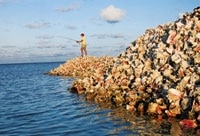
|
He decided to take us back past the hotel to the far west, and it was time for Gardner and me to switch positions.
“OK, OK. Here comes one!” Faulkner’s enthusiasm after the slow hours was palpable. He quietly maneuvered the boat into a better position for Gardner, and there was nearly no wind to speak of. The fish wasn’t really tailing or cruising, but Gardner led it perfectly with her fly. We were all leaning forward, staring at the bone, when it surged to take her fly. She set the hook and got it on the reel. We broke the silence with laughter and whoops, relieved that someone had finally got the skunk off the boat. After a few celebratory photos, she gently released the fish.
She took the bow again, and Faulkner poled us farther west to catch the evening falling tide. We all grew quiet, again examining the water. Faulkner spotted tailers and worked closer to them. Gardner cast to the fish, and although they were so engrossed in feeding they didn’t see her fly, they didn’t spook either. Looking just a bit farther to the west, we could see more tails popping up. She put on her wading booties and got out of the boat to stalk the bones on foot so Faulkner could put me on others.
I couldn’t have asked for a closer shot or a less-picky group of fish. These bones were tailing hard and gave me multiple opportunities to get my cast just right. And I finally did.
“OK, leave it, leave it!” Faulkner instructed. “OK, now strip, strip it!” We watched as the fish turned and took my fly. I carefully set the hook and started squealing as the bone sped across the flat. The sound of line singing out of my reel filled the air – the sweetest noise I’d heard in days. Just as I was about to start jumping up and down, the sound abruptly stopped, and before I could even look down at my reel all the pressure on my rod was completely gone. There were about five different knots in my backing, which was somehow also twisted around the spool. After he took his head from between his hands, Faulkner poled over to pick up Gardner and take us in.
I celebrated the end of the discouraging day by ordering a big lobster tail for dinner. Since it was a weekend, the atmosphere of the little Anegada Reef Hotel had changed from that of a sleepy hideaway into a lively beach party as groups of boaters came in for dinner and cocktails.
When we headed out with Faulkner the next morning, it was already hot. We spotted a pair of tarpon while searching for more bones, which I took as a good sign. Faulkner found us a few fish, and Gardner landed two before noon. We made our way to the far southeast corner of Anegada where we followed Faulkner out of the boat to wade from a mass of coral pieces revealed by the low tide. He said that sometimes the bones come cruising around the corner ready to feed. It was as if he’d taken us to some secret spot. We spent the rest of the afternoon there, and while Gardner hooked and lost three bones, I was still just getting lookers but no takers.
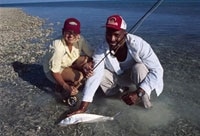
| We kept casting into the current, and finally we each landed a bone within minutes of each other. I was afraid I’d repeat my previous mistakes, but I got the fish in. After years of waiting to get to the BVI and days of challenging conditions, I had caught my first bonefish – a serious labor of love.| | It was a nice fish, weighing about 6 pounds. We held it up for Gardner to take photos. Faulkner smiled at me, happy that I’d finally got a fat prize. “This bonefish,” he said as he posed next to me, “has love handles!” |
**How To Get There
**The BVI are situated in the Caribbean right next to the U.S. Virgin Islands. Tortola, the largest in the chain, is less than 5 miles from St. John, and ferries operate regularly between the two. There are no direct flights to Tortola’s Beef Island Airport, but most major airlines offer service through St. Thomas or San Juan, Puerto Rico. You can also land in St. Thomas and take a ferry, but flying to Beef Island is the most convenient option. Bringing a passport is ideal, but a birth certificate and a photo ID will get you through customs. The U.S. dollar is the official currency, and English is the main language.
Several U.S. agencies, including Avis and Budget, offer rental cars. Taxis are plentiful, but not always readily available (outside of the airport). If you need to get somewhere early in the morning, especially on a Sunday or a holiday, make transportation arrangements the night before. Many drivers will give you their card so you can call on them throughout your stay, which can be very helpful and should be considered, especially if you’re satisfied with their service.
| Tortola offers a variety of restaurants as well as accommodations, which range from quaint inns and villas to luxurious private island resorts. Lambert Beach Hotel provides friendly service in an absolutely stunning setting. Also, several companies have crewed and uncrewed boats for charter. |
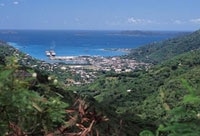
|
Getting to Anegada is just a matter of taking one of Clair Aero’s short flights. Tip: Locals often get bumped to the front of the line, so be sure to pack your patience and a good book. On island, there are a few choices in places to stay, but the Anegada Reef Hotel offers the easiest access to Faulkner. It’s an intimate, family-run operation, so don’t expect U.S. resort-style amenities.
What to Bring
Rods and reels for the BVI should range from 7- to 10-weights with matching weight-forward floating fly lines. The lighter outfit will serve as your main bonefishing tool, but you’ll want a 9 for permit and a 10 for tarpon. Standard 10- to 12-foot tapered bonefish leaders work fine here, and you normally don’t need more than 12-pound tippets. If you are trying for permit, however, you should step up to a 16-pound leader, and of course, use a crab fly like Del’s Merkin. When you run into the resident schools of small tarpon, you’ll want to add a shock tippet of 40- or 60-pound mono. Small Decievers should prove effective on these juvenile fish. For the bones, typical flies like #6 and #8 Crazy Charlies, Gotchas and other classics, and sometimes even small Clousers work well throughout the BVI.
For information on fishing Tortola, call Ian or Liz Batchelor of Caribbean Fly Fishing at 284-494-4797, or visit www.carib flyfishing.com. The closest hotel to Batchelor’s operation is the Nanny Cay Resort and Marina (284-494-2512). Although little offshore fly-fishing has been done here, Capt. Kirby Hodge of KSS Sport Fishing (284-495-4311; k2fish@hotmail.com) is working to develop it and is eager to take people out after tuna and dolphin. If you head offshore you’ll want 12- and 14-weight outfits rigged with intermediate lines and large baitfish patterns. But remember that this fishery is still in its infancy, and you need to have substantial offshore experience to make the most of your charter.
Garfield’s Guides (284-495-9569; www.garfieldsguides.com) is the only guide service on Anegada. If you’re planning to visit this tiny island in the winter, you’ll need to book a couple of months in advance, but in summer you can get away with calling a couple of weeks before your arrival.
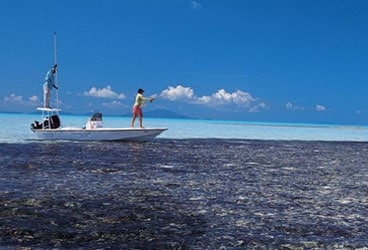
Ghosts of the BVI
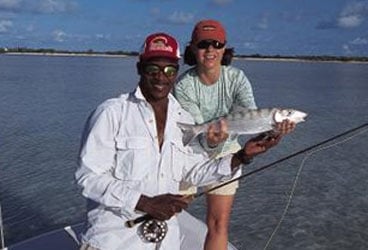
Ghosts of the BVI
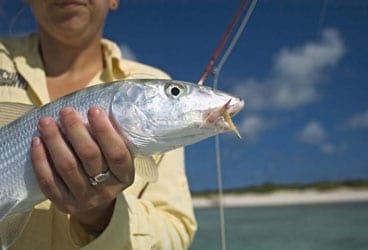
Ghosts of the BVI
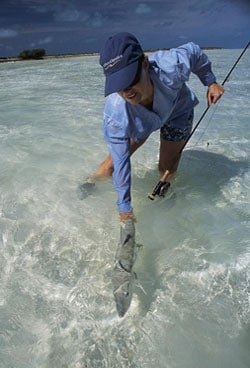
Ghosts of the BVI
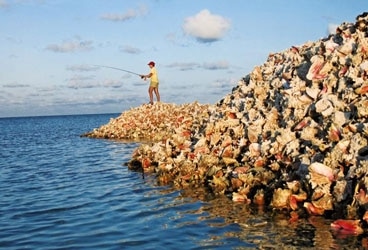
Ghosts of the BVI
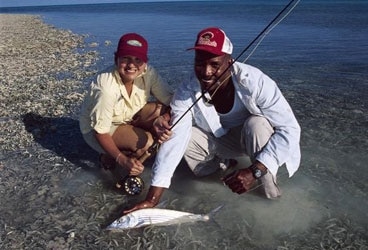
Ghosts of the BVI
